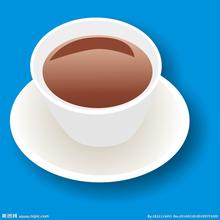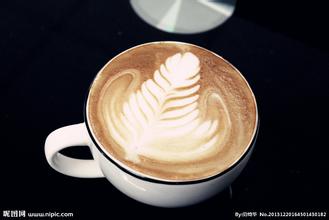Introduction to the characteristics of the manor producing area of Brazilian coffee boutique coffee bean flavor
Napoleon invaded Portugal in 1807 and the Portuguese royal family moved to Brazil. In 1820, the Portuguese royal family moved back to Lisbon, and Prince Pedro Reuba became regent. On September 7, 1822, complete independence from Portugal was declared and the Brazilian Empire was established. Then he was crowned emperor, Pedro I. Brazil promulgated the Constitution in 1824. In 1825, Portugal recognized Brazil's independence.
After the establishment of the Brazilian Empire during the Imperial period (1822-1889), the system of the Braganca dynasty and the Portuguese aristocratic forces remained intact, the great manor system and slavery still existed, and Brazil was dependent on Britain economically and politically. Pedro I exercised autocratic rule, forcibly dissolved parliament in 1823, and then used force to suppress Republican uprisings in northeastern provinces such as Pernambuco.
General K. Fonseka launched a coup on November 15, 1889, overthrowing the monarchy and establishing the United States of Brazil. Under the slogan of "order and progress" and based on the presidential system, the new government has strengthened Brazil's modernization. In addition to producing 3/4 of the world's coffee, it has also made good economic achievements. Later, under the panic of the world economy in the 1930s, the "coffee economy" was dealt a heavy blow, and the subsequent coups, dictatorship and constitutional monarchy plunged politics into chaos.
Pakistan came to power in a military coup in 1964 and changed its name to the Federative Republic of Brazil in 1967. In March 1985, the junta returned power to the people. On November 15, 1989, Pakistan held its first national direct election in nearly 30 years, and Fernando Collor was elected president. On December 29th, President Collor was forced to resign on suspicion of taking bribes, and Vice President Itamar Franco took over as president on the same day. On October 3, 1994, Fernando Henrique Cardoso won the national election and became the 38th president of Brazil on January 1, 1995. On October 4, 1998, Cardoso was re-elected. On January 1, 1999, Cardoso was inaugurated as Pakistan's 39th president until December 31, 2002.
In October 2002, Lula, a candidate of the leftist coalition led by the Labor Party, won the general election, becoming the first directly elected left-wing president in Pakistan's history. In October 2006, Lula defeated the Social Democratic candidate Alkmin and won re-election. Dilma Rousseff won the general election in October 2010 as a candidate for the Labour Party. On May 12, 2016, the plenary session of the Brazilian Senate passed the impeachment motion against President Rousseff. Rousseff will be forced to leave office for up to 180 days, during which the presidency was represented by Brazilian Vice President Michel Temer. I found that I had turned dark brown, more beautiful than before, and exuded a charming fragrance, but before I had a good appreciation of myself, I was ground into powder by them. The process is really painful. Next, I was put into a small cup and placed on a small round table. They soaked me in boiling water, and the cup turned into a dark brown, bitter, but fragrant drink, but they would not drink me into their stomach. Instead, they smelled me again, picked up a small spoon, scooped up a small spoon, inhaled it quickly and made a loud noise, and then circled around their mouths. I was thrown up again. In this way, my journey is over?!
(coffee companies in Brazil have their own quality appraisal laboratories.)
That's true, but my friends who grew up in the same land and in the same group got the opportunity to go to the ocean because I was recognized by the coffee merchants. The coffee buyer was satisfied with my quality, then bargained with the middleman and finally placed an order with my host. My master was naturally pleased. He bagged my friends and put them on the train.
(in 1930, a railway was built to transport coffee beans from the interior of Brazil to the port of Santos.)
Do you know? The Brazilian railway was built in 1867 to transport coffee. Brazil's passenger railways are still extremely underdeveloped, and we seem to be much luckier than ordinary Brazilians. My friends arrived in the port of Santos by special train. after acceptance, they were directly loaded on "luxury ships", crossed the sea, and finally arrived in Europe and the United States, where coffee companies were included in factories for baking and processing. to the hands of coffee consumers around the world.
(the Coffee Industry Association of Brazil was founded in 1952. The picture shows the advertisement of the Coffee Industry Association of Brazil. The background is Bread Mountain in Rio de Janeiro. The car reads: Brazilian Coffee, the Best Coffee in the World)
(in the historic district of Santos, tourist trains carry tourists' memories of the coffee trade in Santos.)
Brazil has long been the world's largest coffee producer, accounting for 45% of the world's total coffee production in history and still 32% today. Coffee has brought industrial and economic development to Brazil, especially the state of Sao Paulo. Santos in the state of Sao Paulo is famous for exporting coffee. As Brazil's coffee ambassador, it attracts coffee merchants from the interior of Brazil and around the world, learning to taste coffee and import and export coffee beans. Familiar with Illy, Lavazza, Starbucks and so on, coffee beans are purchased every year in Santos, Brazil.
However, in Brazil today, with the increase in coffee production, coffee warehouses are built in mountainous areas close to coffee producing areas, and coffee beans are more directly completed in the warehouse and then transported to the port of Santos for export. The chain of the coffee industry in Santos is smaller than it used to be.
Even so, the importance of Santos remains unshakeable when it comes to coffee. In Santos, the largest coffee museum in Brazil, formerly a coffee exchange, was built in the early 20th century, with stained glass windows and marble floors like a luxurious baroque palace. Tens of thousands of tourists from home and abroad will choose to visit here to learn about coffee cultivation, roasting knowledge, Brazilian coffee history and so on.

Important Notice :
前街咖啡 FrontStreet Coffee has moved to new addredd:
FrontStreet Coffee Address: 315,Donghua East Road,GuangZhou
Tel:020 38364473
- Prev

Full-scented Nicaraguan Coffee Flavor Taste introduction to boutique coffee beans in manor production area
Managua, the capital of Nicaragua, is located in the west of the border, on the south bank of Lake Managua, hence its name. The northwest is 140 kilometers away from the Collinto seaport on the Pacific coast. 55 meters above sea level. It is a Spanish city with beautiful scenery. Because it is located to the east of the Pacific volcanic active seismic belt, there have been four strong earthquakes in the city in the past 100 years, including one in December 1972.
- Next

Refreshing taste of Kenyan coffee flavor manor production area characteristics of boutique coffee beans
The Constitution of the Republic was promulgated in 1964 and has been amended 30 times by September 2014. In June 1982, Ken established an one-party system by amending the constitution. In December 1991, it was changed to a multi-party system, which stipulates that the president is willing to be a multi-party democratic country, and the president is the head of state, head of government and commander-in-chief of the armed forces, with a term of office of five years and no more than two terms.
Related
- Detailed explanation of Jadeite planting Land in Panamanian Jadeite Manor introduction to the grading system of Jadeite competitive bidding, Red bid, Green bid and Rose Summer
- Story of Coffee planting in Brenka region of Costa Rica Stonehenge Manor anaerobic heavy honey treatment of flavor mouth
- What's on the barrel of Blue Mountain Coffee beans?
- Can American coffee also pull flowers? How to use hot American style to pull out a good-looking pattern?
- Can you make a cold extract with coffee beans? What is the right proportion for cold-extracted coffee formula?
- Indonesian PWN Gold Mandrine Coffee Origin Features Flavor How to Chong? Mandolin coffee is American.
- A brief introduction to the flavor characteristics of Brazilian yellow bourbon coffee beans
- What is the effect of different water quality on the flavor of cold-extracted coffee? What kind of water is best for brewing coffee?
- Why do you think of Rose Summer whenever you mention Panamanian coffee?
- Introduction to the characteristics of authentic blue mountain coffee bean producing areas? What is the CIB Coffee Authority in Jamaica?

